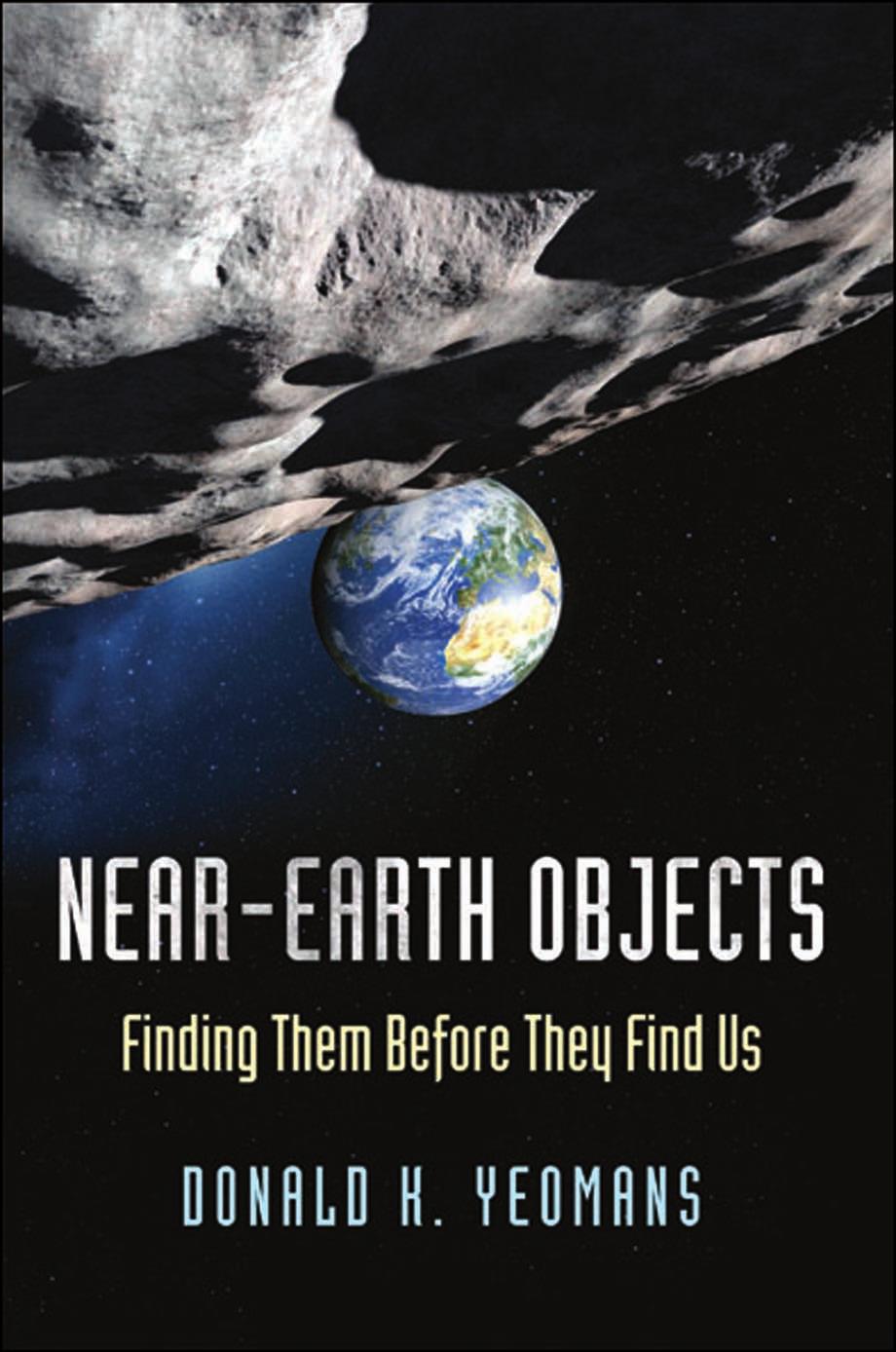Near-Earth Objects: Finding Them Before They Find Us by Donald K. Yeomans

Author:Donald K. Yeomans [Yeomans, Donald K.]
Language: eng
Format: epub, pdf
Tags: Science
ISBN: 9780691173337
Google: JXCYDwAAQBAJ
Amazon: B01GP3POK6
Goodreads: 14891834
Publisher: Princeton University Press
Published: 2012-11-10T23:00:00+00:00
FIGURE 6.3. The Japanese spacecraft Hayabusa extensively studied near-Earth asteroid (25143) Itokawa in the fall of 2005. Near-Earth asteroid Itokawa was named for the father of Japanese rocketry, Hideo Itokawa, and Hayabusa is Japanese for Falcon. In this image, a very rough surface and the two large lobes that may have come together long ago to form this object suggest the rubble pile nature of this asteroid. Itokawa is an S-type silicate rocky asteroid.
Source: Courtesy of JAXA.
Upon its arrival at the near-Earth asteroid (25143) Itokawa in September 2005, the Japanese spacecraft Hayabusa imaged a very rugged body that looked much like an asteroid that had been subjected to a catastrophic collision, blasted apart, and reassembled long ago into a rubble pile structure.
There are two rocky lobes connected by a smooth neck region but very few impact craters. It seems likely that numerous ongoing collisions by smaller asteroids shook Itokawa’s surface, causing surface materials to adjust. This so-called seismic shaking repeatedly filled in any craters that remained from previous collisions. Spectroscopic investigations into the nature of Itokawa’s surface showed that it is made up primarily of the same types of minerals, like olivine and pyroxene, found in ordinary chondrites, the most common type of meteorites. After overcoming spacecraft thruster and communication problems, a loss of spacecraft control gas, and a dead battery, the intrepid Hayabusa spacecraft made it back to Earth in June 2010 and safely deposited its sample capsule containing thousands of Itokawa’s surface dust particles on the Australian outback. These dust samples show that Itokawa is a so-called LL chondritic body. It has been extensively heated and its elemental composition is broadly similar to the Sun’s initial composition. The “LL” part means that it is low in iron and low in metals generally. These dust particles will be studied for years using comprehensive laboratory techniques. Based on ground-based telescopic studies, MIT’s Richard Binzel and his colleagues had suggested that Itokawa’s spectrum was similar to LL chondrite meteorites in 2001.
Mathilde’s ability to absorb punishment without going to pieces and Itokawa’s rugged good looks are evidence of their rubble pile structures, but some of the strongest evidence in support of the rubble pile model of asteroids has come from studies of their rotations.
Whirling Rocks: The Rotation of Asteroids
There is a community of amateur astronomers who devote large portions of their nighttime hours to observing the subtle variations in the light received from distant asteroids. Many of these observers are amateurs in name only. They do extraordinarily precise work to determine the rotation characteristics of asteroids. Imagine an asteroid shaped like a bowling pin—there are a few out there that do resemble a bowling pin. The Sun illuminates our bowling pin–shaped asteroid and this sunlight is reflected to our eye so the object’s brightness depends upon the breadth or narrowness of the object presented to the observer. That is, an asteroid is brighter when it presents its broad side to us rather than its pointed end. Unlike a perfectly thrown football that
Download
Near-Earth Objects: Finding Them Before They Find Us by Donald K. Yeomans.pdf
This site does not store any files on its server. We only index and link to content provided by other sites. Please contact the content providers to delete copyright contents if any and email us, we'll remove relevant links or contents immediately.
| Aeronautics & Astronautics | Astronomy |
| Astrophysics & Space Science | Comets, Meteors & Asteroids |
| Cosmology | Mars |
| Solar System | Star-Gazing |
| Telescopes | UFOs |
Tools of Titans by Timothy Ferriss(8304)
Turbulence by E. J. Noyes(7978)
Secrets of Antigravity Propulsion: Tesla, UFOs, and Classified Aerospace Technology by Ph.D. Paul A. Laviolette(5333)
Astrophysics for People in a Hurry by Neil DeGrasse Tyson(5151)
Room 212 by Kate Stewart(5071)
Design of Trajectory Optimization Approach for Space Maneuver Vehicle Skip Entry Problems by Runqi Chai & Al Savvaris & Antonios Tsourdos & Senchun Chai(5037)
Pale Blue Dot by Carl Sagan(4953)
The David Icke Guide to the Global Conspiracy (and how to end it) by David Icke(4657)
A Journey Through Divination and Astronomy by Publishing Pottermore(4363)
Goodbye Paradise(3761)
Apollo 8 by Jeffrey Kluger(3667)
COSMOS by Carl Sagan(3589)
The Five People You Meet in Heaven by Mitch Albom(3520)
Losing the Nobel Prize by Brian Keating(3518)
How to Read Water: Clues and Patterns from Puddles to the Sea (Natural Navigation) by Tristan Gooley(3433)
Brief Answers to the Big Questions by Stephen Hawking(3393)
How to Read Nature by Tristan Gooley(3292)
The Order of Time by Carlo Rovelli(3162)
A Brief History of Time by Stephen Hawking(2992)
